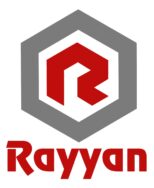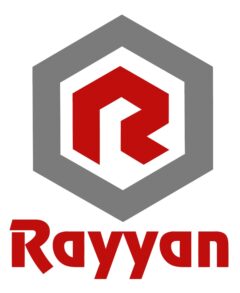Vulkan 1 3.283.0 SDK Now Available Cross platform 3D Graphics
If you encounter any problems while following the tutorial, then first check the FAQ to see if your problem and its solution is already listed there.If you are still stuck after that, then feel free to ask for help in thecomment section of the closest related chapter. To make it easier to learn to work with Vulkan, we’ll be using the newerVulkan-Hpp bindings that abstract some of the dirty work and help prevent certain classes of errors.We’ll also use Vulkan raii and the Vulkan C++20 module. With thiscombination, we show how to use Vulkan in a method that will translatedirectly into large projects where C++ libraries have traditionally causedlarge build times while also showing one method of making Vulkan a joy towork with. Where possible, we do take advantage of modern tools to make this easier inthis tutorial to work with and learn Vulkan; however, Vulkan isn’t meant to beeasy.
Pre-compiled shaders
Superb open source game and app development tool with bespoke content creation features. Compared to OpenGL®, Vulkan® substantially reduces “API overhead,” which is background work a CPU must do to interpret what a game is asking of the hardware. Reducing this overhead gives hardware much more time to spend on delivering meaningful features, performance and image quality. Vulkan® also exposes GPU hardware features not ordinarily accessible through OpenGL®. Derived from AMD’s revolutionary Mantle API, Vulkan® is a powerful low-overhead graphics API designed for developers who want or need deeper hardware control over GPU acceleration for maximized performance and predictability. The platform operates without any need for payment, since there exist no fees nor subscriptions nor hidden costs.
Vulkan targets high-performance real-time 3D-graphics applications, such as video games and interactive media, and highly parallelized computing. Vulkan is intended to offer higher performance and more efficient CPU and GPU usage compared to the older OpenGL and Direct3D 11 APIs. It does so by providing a considerably lower-level API for the application than the older APIs, that more closely resembles how modern GPUs work.
That architecture proved useful when we contributed the source code and API specification of Mantle to serve as the foundation of Vulkan® in May of 2015. From the consortium that brought you OpenGL®, Vulkan® is a new graphics API for developers who want or need deeper hardware control. Designed with “low-overhead” capabilities, Vulkan® gives devs total control over the performance, efficiency, and capabilities of Radeon™ GPUs and multi-core CPUs. However, the price you pay for these benefits is that you have to work with asignificantly more verbose API.
Developers building games or tools for multiple systems, such as Windows, Android, and Linux, will find Vulkan to be an excellent platform choice. You have probably encountered Vulkan, improving your experience without recognizing it, even if Vulkan remains unknown to you. Vulkan Profiles provide a way to precisely communicate functionality requirements and device capabilities between participants in the Vulkan ecosystem to streamline the development and deployment of portable applications. The new mechanism enables the precise specification and management of sets of API capabilities including a core version plus a set of required extensions, supported limits, features, and formats.
Developers embarking on the Vulkan path will find a challenging process, yet they will encounter multiple valuable benefits, such as top-tier performance combined with multi-platform deployment capabilities. The core power of Vulkan exists in its management of the communication between GPU hardware and installed software programs. With older APIs, your system performs a heavy work cycle, which jams one CPU core. Vulkan distributes processing tasks across several CPU cores, so your system delivers better multitasking, together with reduced lag and more uniform frame display. The differences will become noticeable, particularly when playing demanding games or when working in high-performance situations. Vulkan system upgrades function by making the most out of existing hardware without providing any major performance upgrading capabilities.
- The Vulkan API is maintained by the Khronos Group, while they oversee open standards such as OpenGL and OpenCL and additional platforms.
- To make it easier to follow along for developers using other programming languages, and to get some experience with the base API we’ll be using the original C API to work with Vulkan.
- Vulkan targets high-performance real-time 3D-graphics applications, such as video games and interactive media, and highly parallelized computing.
- As an API user, you gain full authority to allocate tasks between cores, as well as direct pixel rendering operations and memory partition rules.
- The latest versions of NVIDIA and AMD, and Intel graphics cards now support Vulkan because of updated drivers.
- To make it easier to learn to work with Vulkan, we’ll be using the newerVulkan-Hpp bindings that abstract some of the dirty work and help prevent certain classes of errors.We’ll also use Vulkan raii and the Vulkan C++20 module.
The fundamental reason behind Vulkan’s creation was to harness the complete potential of multicore CPUs and modern GPUs beyond what OpenGL can achieve. Small projects benefit from this technology while in app development, yet it faces challenges when applied to robust contemporary games. The selection of an API depends on both your system specifications as well as your practical requirements. Among all alternatives, DirectX stands out most through its current version, DirectX 12. Microsoft continues to maintain DirectX as its proprietary graphics API, through which Windows has maintained its gaming default for extended decades. The API system DirectX 12 delivers equivalent functions to Vulkan, which offer performance enhancements to developers.
Why Should I Download Vulkan?
The tutorial will cover howto set these up on Windows with Visual Studio, and on Ubuntu Linux with GCC. It is targeted atprogrammers who are enthusiastic about high https://22betofficial.com/ performance computer graphics, andare willing to put some work in. If you are more interested in game development,rather than computer graphics, then you may wish to stick to OpenGL or Direct3D,which will not be deprecated in favor of Vulkan anytime soon. Anotheralternative is to use an engine like Unreal Engineor Unity, which will beable to use Vulkan while exposing a much higher level API to you. The process of enabling Vulkan can often be straightforward when you are gaming within a supported system because it presents itself as a toggle within graphics settings menus. Device users can enable Vulkan through graphical options to obtain enhanced drawing performance without dealing with setup processes.
Regular users do not require Vulkan installation since their systems contain the component embedded within GPU drivers. The understanding of Vulkan’s functions enables users to comprehend the reasons behind better game performance in settings where Vulkan mode becomes available. Unlock smoother gameplay and better graphics with Vulkan—a powerful, cross-platform API that boosts performance and gives developers deep control over rendering tasks.
Vulkan developers have access to a broad set of tools including SDKs, profilers, libraries, game engines and frameworks. You can find many of these resources on this page; use the quick buttons to jump straight to where you need to be. The platform supports Vulkan functionality on Windows, Linux, and Android systems right away.
Vulkan NVIDIA Presentations
Although each chapter is written as a follow-up on the previous one, it is alsopossible to read the chapters as standalone articles introducing a certainVulkan feature. All ofthe Vulkan functions and types are linked to the specification, so you can clickthem to learn more. Vulkan is a very new API, so there may be some shortcomingsin the specification itself. It enables debugging, profiling, and exporting of captured frames built with Vulkan, Vulkan SC, Vulkan Ray Tracing, and OpenGL.
This tutorial will teach you the basics of using the Vulkangraphics and compute API. Vulkan is a new API by the Khronos group(known for OpenGL) that provides a much better abstraction of modern graphicscards. This new interface allows you to better describe what your applicationintends to do, which can lead to better performance and less surprising driverbehavior compared to existing APIs like OpenGLand Direct3D.
Running with ray-traced lighting, shadows, and reflections, Quake II RTX is the world’s first cross-vendor ray-tracing Vulkan application. NVIDIA released the full source code on GitHub, serving as a great example for developers who want all the details of how this remastering was achieved. The driver is built on top of AMD’s Platform Abstraction Library (PAL), a shared component that is designed to encapsulate certain hardware and OS-specific programming details for many of AMD’s 3D and compute drivers. Leveraging PAL can help provide a consistent experience across platforms, including support for recently released GPUs and compatibility with AMD developer tools. Game developers and producers of game engines such as Unity and Unreal Engine, alongside additional high-performance applications, choose Vulkan as their platform.

